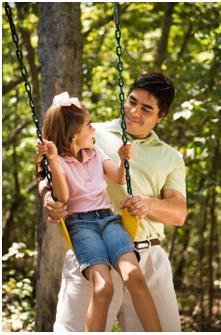Sensory Processing Disorders - SPD Treatment

Learn about sensory processing disorders and the most effective SPD treatment options for children with symptoms like tactile defensiveness. One form of treatment used by occupational therapists is Sensory integration therapy as well as what is referred to as the Wilbarger Brushing Protocol.
Desensitization procedures may be beneficial for children suffering from hypersensitivities and written programs in applied behavior analysis may also be effective in helping to decrease specific undesirable behaviors or increase specific desirable behaviors that occur as a result of the disorder.
It is important to note that some of the symptoms are typical of some children and do not necessarily indicate that your child has a sensory processing disorder. It is when the symptoms and behaviors interfere with everyday functioning that a child should be evaluated by his or her pediatrician, an occupational therapist or other specialist.
I, myself, suffer from hypersensitivity to auditory sensory input, but would not necessarily state that I have other sensory disorder symptoms. I am very clearly distracted by background noises, have a difficult time following auditory lectures without visual imagery and am easily irritated by sudden loud noises or persistent repetitive noises. Despite this, my everyday functioning is not altered as a result.
Everyone could probably identify with some of the symptoms to some degree, so just be sure to consider how the symptoms affect daily functioning before getting too upset by thinking your child may have a processing disorder. However, children diagnosed with autism, ADHD, or developmental disorders are more likely to have difficulties processing sensory input. It's also possible that a child showing symptoms of oppositional defiant disorder is actually just trying to avoid undesirable sensory input.
SPD Treatment
by parents and caregivers
Here are some additional tips in relation to SPD treatment for parents and caregivers to know how to interact with children suffering from a sensory processing disorder:
SPD treatment for hypersensitive children that tend to overreact to stimuli:
• Slowly/Gradually introduce any sensory stimuli, such as lights, noise, or physical touch. Dimmer lights are great and always start by having the television and radio at a low level before gradually increasing the sound.
• Avoid loud crowded environments and overstimulating areas full of bright lights (avoid strobe lights and possibly fluorescent lights).
• You may want to allow your child to wear ear plugs or a Noise Reduction Earmuff
when he or she will have to be somewhere that is usually loud, such as a school bus.
• Provide your child with sunglasses he or she can take wherever you go to help with bright lights.
• Encourage your child to experience new things, but do not force your child to come in contact with bothersome stimuli or environments that cause him or her to be afraid.
• Try to slowly introduce new textures into your child’s diet with repeated exposure. If needed, check out the page about dealing with picky eaters as an SPD treatment for tactile sensitivities.
• Check out the page on social stories to prepare your child ahead of time for places you are going. Be sure to illustrate all stimuli he or she will come into contact with that may be bothersome.

• Provide lots of opportunities for physical activities and movement experiences, such as jumping on trampolines, swinging, and running.
• Utilize a weighted compression vest and/or weighted blanket with supervision of an OT.
• Check out the page on improving poor listening skills for helping your child listen and follow directions.
• Have your child change positions frequently when doing activities, such as sitting, kneeling, laying down etc.
• Use lots of hand gestures and an animated tone of voice, possibly even sign language or picture exchange communication system when speaking to your child to provide him or her with extra sensory input to illustrate your message.
Other Types of Therapy
• Physical Therapy may be used to help with gross motor coordination and may involve activities to strengthen muscle control.
• Speech and Language Therapy may be used increase verbal skills, articulation, strengthen oral-motor control, and help to expand language skills deficits often associated with vestibular dysfunction or auditory dysfunction.
• Auditory Integration Training is a therapy focused on improving the brain's ability to process auditory stimuli.
www.aitinstitute.org
• Integrated Listening Systems Therapy - A program using headphones with special music that targets different areas of development in the brain while incorporating the other sense for integration.
• Vision Therapy may be provided by a developmental optometrist to help provide sensory-motor and educational activities that help strengthen eye-motor control, visual discrimination, and eye-hand coordination.
• Chiropractic services help to address the structure and function of the nerves, muscles, and joints controlling posture and movement.
• Craniosacral Therapy as part of SPD treatment, evaluates and enhances the craniosacral system, made of the membranes and cerebrospinal fluid that protect the brain and spinal cord. Therapy revolves around light touch manipulation of the bones in the skull sacrum and coccyx to correct any imbalances.
• Hippotherapy involves treatment with the use of a horse to influence muscle tone, promote muscle action, and improve vestibular reactions.
• Perceptual Motor Therapy may be helpful to stimulate left/right brain communication, helping the child to interpret sensory input better. Activities, such as sensory-input techniques, may help to remediate gross-motor, fine-motor, and visual discrimination difficulties.
Some additional pages you may find helpful:
• Sensory Modulation Disorder (subtype of SPD)
• Sensory Seeking
• Proprioceptive Dysfunction
• Tactile Defensiveness with hypersensitivity to tactile stimuli
• Oral Defensiveness
• Olfactory Dysfunction
References
1. Kranowitz, C. S. (2005). The Out-of-Sync Child: Recognizing and Coping with Sensory Processing Disorders. New York, NY: Penguin Group.